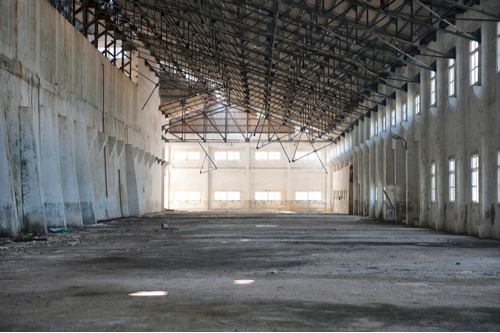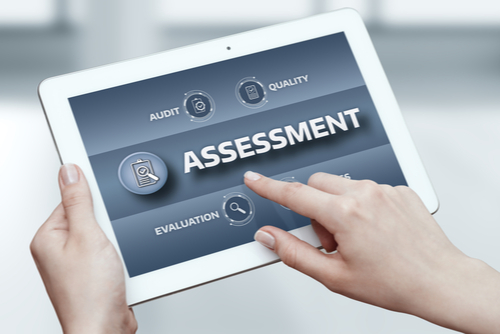Phase III Environmental Site Assessments
Our remedial methods get rid of each and every REC without exceptions!
We have helped hundreds of clients achieve compliance and meet environmental regulations.
We try to complete our work as fast as possible for early occupancy.

It's a no brainer that you need to clean up your property of contaminants to ensure the safety of your employees and occupants. Your site or building should be free of environmental liabilities before you can redevelop or use it for new purposes according to federal and local regulations. If your Phase I and Phase II ESA have identified potential contaminants, then you have to go through a Phase III Environmental Site Assessment or Phase III ESA for property remediation.
New York Engineers is an expert environmental assessment agency adept in performing Phase III ESAs. We help you determine the amount and extent of contamination on your property and design remediation plans based on your needs and circumstances. Our team also helps you carry out the remediation program as per plans to free your property from environmental concerns.
We always adopt strict quality control processes and comply with state, local and federal regulations for the best outcome. Our team helps you find the most reliable, efficient and cost-effective methods of remediation that can be implemented effectively with minimum disruptions and time.
You can take our assistance to develop the best remedial plans matching your budget and needs. We can provide full-scale ESAs including Phase I, Phase II, Phase III and Phase IV ESAs so that you don't have to go anywhere else! You can think of us as a one-stop solution for all your environmental assessment and remediation needs. You can save money and time working with us as we always make our best effort to deliver results on time for early execution of your project.

The Phase I ESA provides the history and current condition of your property. Extensive testing and sampling are carried out to determine the presence of contaminants or environmental liabilities during Phase II ESA. If the Phase II ESA doesn't identify and contaminants, then it's the end of the process for you.
However, if we find contaminants during our Phase II ESA, you may need a Phase III ESA to determine the extent of contamination in your property. The Phase III ESA will take information from the Phase I and Phase II ESA and involve a detailed investigation of your property. We will need to find out all we can about your contaminants and extent of contamination so that we can create the most effective remediation plan under present conditions.
Our Phase II ESA will help us develop a plan of remediation which we will implement on your property after getting approval from the local, state and federal environmental agencies. The ESA will highlight the full scope of available options with required costs and time for the cleanup.
Phase II ESAs determine the boundaries where the contamination starts and stops and help us quantify the aspects of remediation. We calculate the volume of soil to be excavated, amount groundwater to decontaminate and so on.
Our engineers and environmental professionals are experienced at conducting Phase III ESAs and know the right steps to take for the best results. You can also consult us to know whether you need a Phase III ESA and get professional guidance through every step of the process.
Phase II ESA generally refers to the remediation stages of a property and includes investigations, planning and remediation of the property in question. The actual methods of investigation and remediation will vary according to projects, depending on the nature, extent and type of contamination.
Our Phase III ESA includes several components some of which are described below :
Phase I and Phase II ESAs provide us with the required information we need to plan your site investigation. Based on your requirements, we will need to determine the extent of contamination on your site. This process is known as delineation and confirms the boundaries of the spread of contamination.
Our environmentalists will plan the investigation we need to perform on your property which can include deciding the location of boreholes and coordinating underground utility clearances.
This is the stage when we actually carry out site investigation based on the plans developed in the earlier step. The site investigation is similar to sampling and analysis we did during Phase II ESA, though they may be more exploratory in nature.
We will carry out several investigations like drilling the earth for soil samples, using groundwater monitoring wells for water sampling, logging boreholes to collect samples from greater depths, monitoring specific media, performing soil vapor screening and more.
All the samples will be sent to our laboratories for further testing and analysis.
The site investigation helps us delineate the boundaries of potential contaminants and identify their pathways. We also generate more details about the site and possible human risks. The information helps us develop a remedial plan in our next step.
We will also calculate the volume of contaminated soil, assess and model groundwater flow and perform additional monitoring as necessary.
All the work we did till now will be used to create the most fitting remedial action plan for your property. Your goals and objectives for the site are major considerations and help us to select a remediation approach that best suits your needs.
During planning, we will determine the exact remediation methods to implement and the ways to implement them. We will also consider other factors such as timeline, cost, applicable regulations and restrictions to choose a suitable remedial action plan for achieving regulatory compliance.
We will also ensure that our RAP gets approval from the applicable environmental agencies before we implement it. Our team will develop the RAP addressing every single REC or environmental concern on your property.
We carry out the remediation following the RAP we have developed. Some remedial actions can be done in a short time while others may take months or even years. For example, we can excavate and dispose of contaminated soil within one or two days from your site. Other remedial methods such as chemical oxidation or bioremediation can take up a few months to complete.
The unique characteristics of a property can also demand a lengthy remedial process for effective cleanup.
We may also take help of other remedial methods may include groundwater treatment, soil vapor extraction, solidification, stabilization, air stripping and more. Sometimes, the most practical option is to leave the environmental concerns undisturbed and adopt a risk management based environmental remediation strategy.
We can guide you with risk-based remediation strategies for properties where cleanup is not feasible. Our team can also help you with Modified Generic Risk Assessments (MGRA) and Site Specific Risk Assessments (SSRA) if you need.
We closely monitor the remediation process so that all work follows our plan for maximum efficiency.
The second last stage of Phase II ESA involves documentation and gaining approval from environmental agencies signifying the effective cleanup of the site. We document the entire remedial process thoroughly so that it can be made accessible for future references.
We will create an in-depth report of all our findings and remedial action taken on the site for your convenience. The report will describe the presence of any impacted material and the current environmental condition of the site.
We will also include recommendations for any further action that you might need to take for your property. Our team may conduct additional assessments and collect recent samples to establish the effectiveness of the remedial actions. You can file an RSC for brownfield properties after the completion of our report.
That brings an end to our Phase III ESA process. You can consult with our team for more details on how we conduct Phase II ESAs for different types of sites and properties.
We undertake a variety of remediation methods based on the nature of contaminants and RECs present on the site. Here's a brief description of some methods we might utilize-
Soil Excavation : Soil excavation is the most common remediation method where contaminated soil from the property is sent to a landfill or cleaned on the site. We will first determine the amount of soil to be remediated and the types of harmful chemicals present in the soil before we proceed to clean or excavate it.
Groundwater Remediation : We treat and remediate groundwater by installing groundwater monitoring and extraction wells. Our team also tests the water for the effectiveness of the remediation program and prevents the spread of contaminants or the creation of other potential liabilities.
Soil Vapor Extraction : We carry out soil vapor extraction or SVE to eliminate the harmful chemical from the soil above the water table. Our team uses advanced equipment to access the polluted area and extract the contaminants from the soil and groundwater.
Chemical Oxidation : Another useful method of removing contaminants from soil and water is chemical oxidation. We use oxidants to destroy harmful chemicals and pollutants by changing them into harmless compounds like water and carbon dioxide. The process is effective for various chemicals like fuels, solvents and pesticides.
New York Engineers understands that each unique property needs a tailored approach for remedial action. We make use of proven processes and industry best practices to offer environmental remediation strategies that align with your business goals and objectives. Our environmental professionals use the latest in remediation technology and techniques to reduce the time you need to redevelop your site.
Our Phase III ESAs are meant to unlock the value of your developable property, making it suitable for redevelopment or occupancy. We also use various methods and on-site testing equipment to limit the amount of soil you need to transfer to landfills, saving you both time and money. Our Phase III ESA takes the guesswork out of remediation and provides optimum results based on actual data and facts.
Our team has conducted thousands of environmental assessments and remedial actions. We are experienced and know the right step to take with full knowledge of regulations and environmental implications. Our team always takes environmentally sustainable approaches so that you never have to worry about liabilities or liens. We help you prepare your investment for maximum profitability and ensure a positive return on investment.
Contact us today to schedule a Phase III ESA for your property.